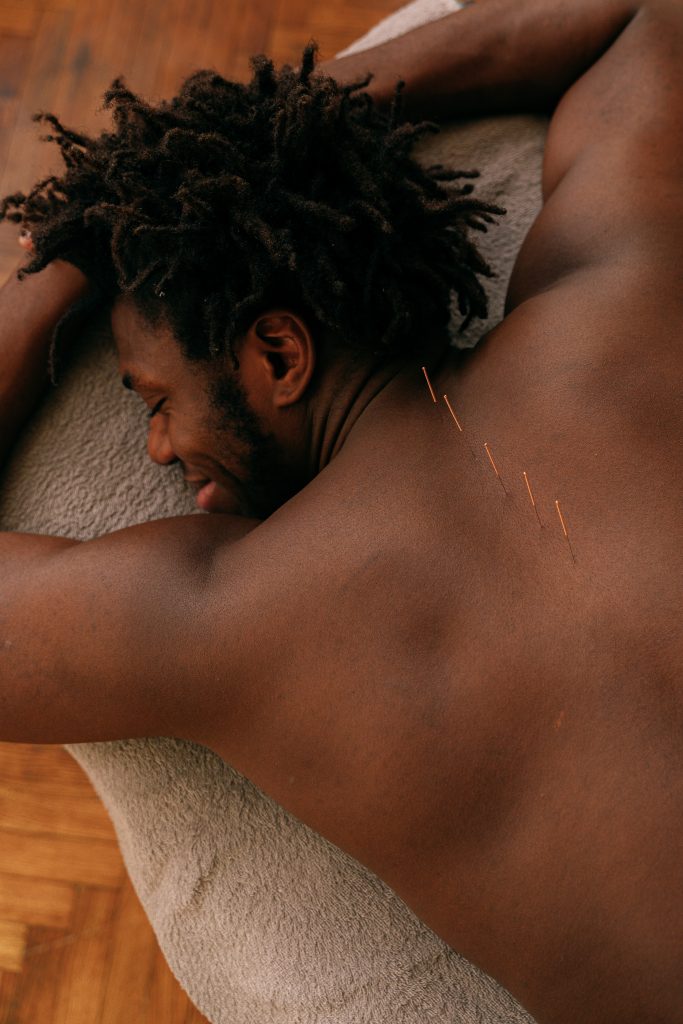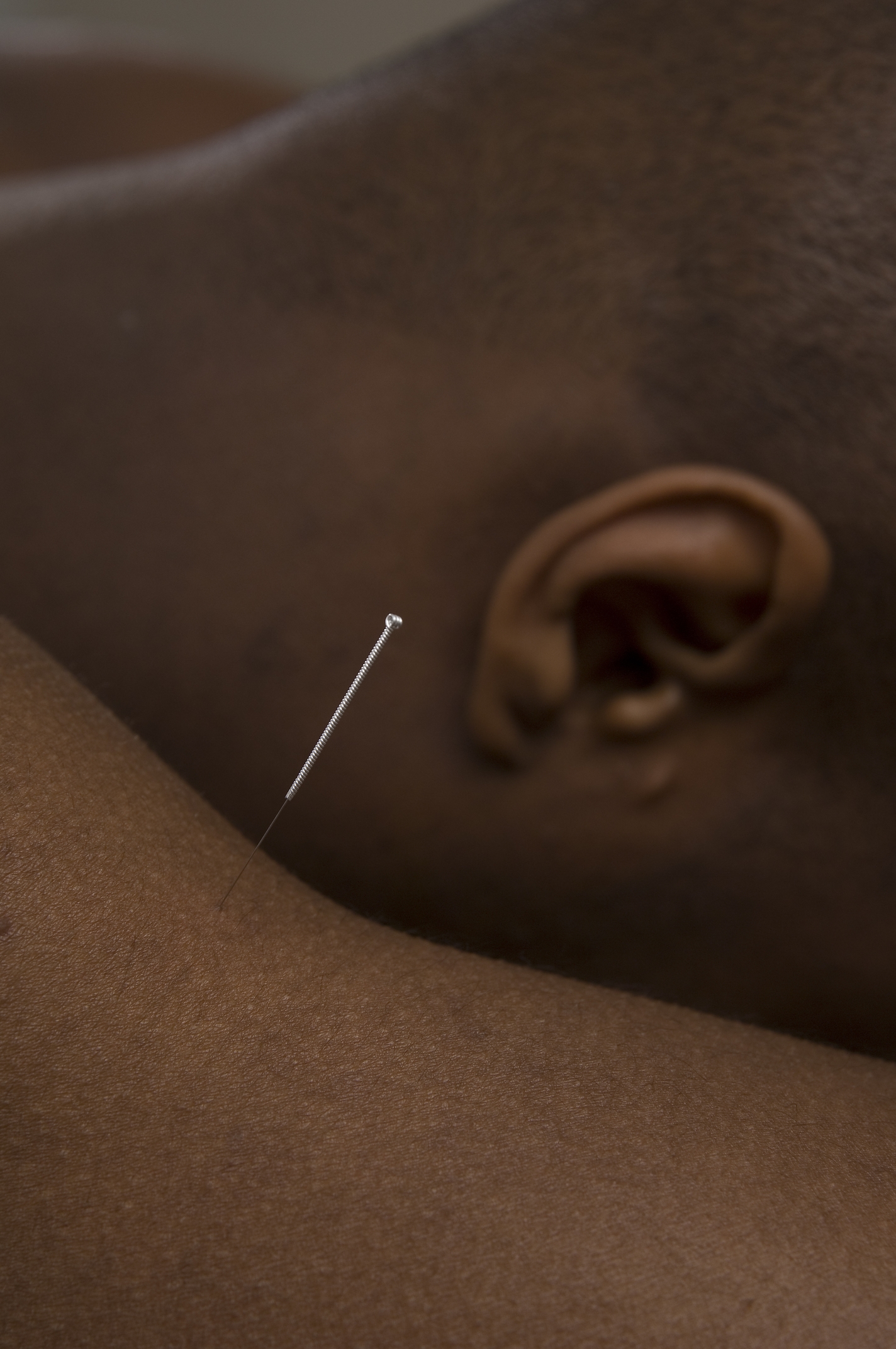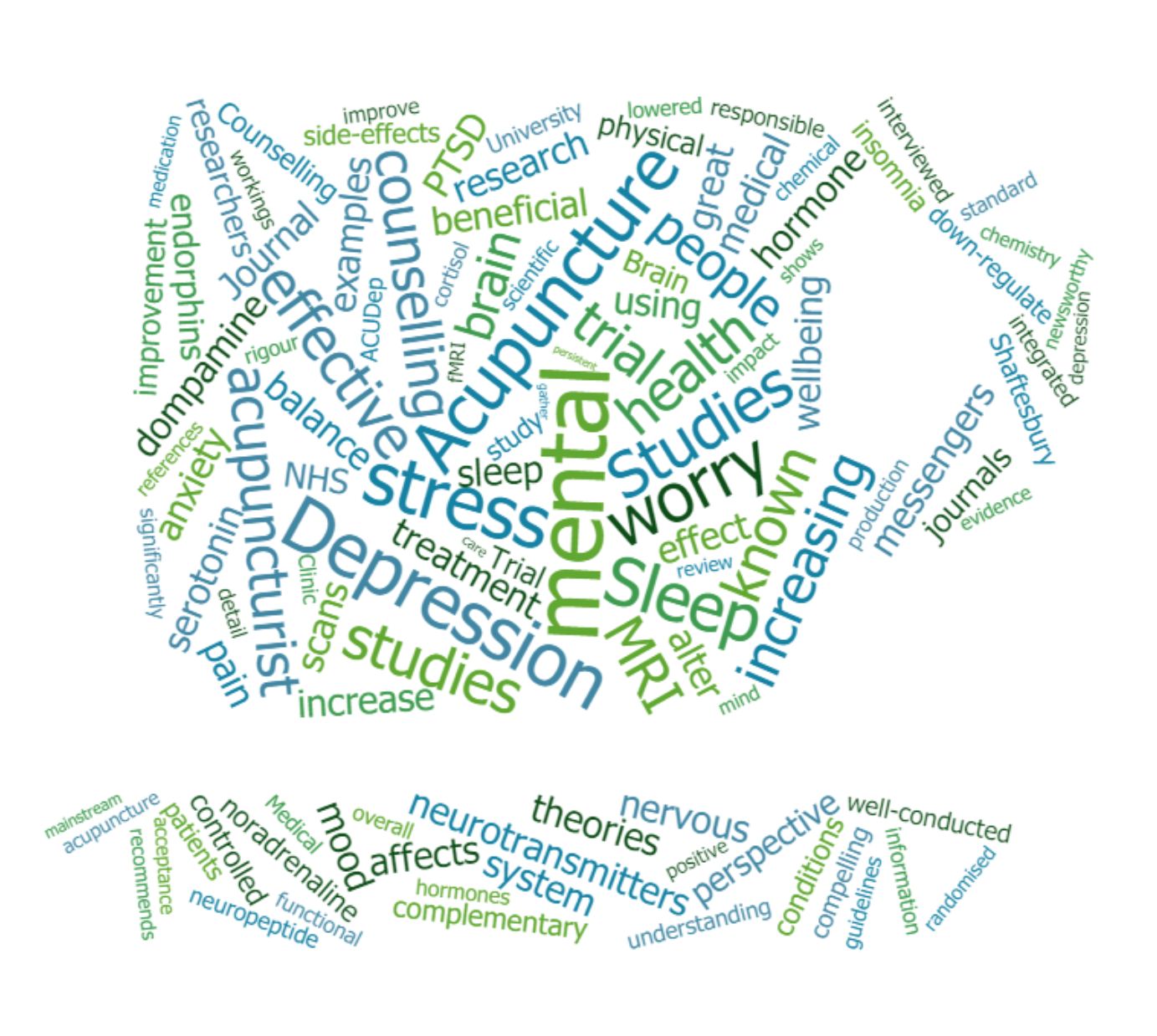See also: Our in-depth blog about the NICE guidelines regarding recommendation of acupuncture for Chronic Pain, which is an evidence based piece informing NHS practise.
Important to know: Chronic health conditions should be addressed under direct medical supervision of your GP or consultant, acupuncture would be an adjunct or complement to usual care – we advise that you let you doctor know when you use this approach.
There are many painful conditions for which patients seek acupuncture to address their symptoms. We have dedicated pages for arthritis, back pain, carpal tunnel, facial (TMJ) pain, shoulder and frozen shoulder, headache, migraine, kidney stones, plantar fasciitis, knee pain, sciatica, neuropathic (nerve) pain, rheumatoid arthritis, tennis and golfer’s elbow, neck pain, and pelvic pain each of which give references and further resources to evidence based factsheets and may be of use.
A scholarly search of the available research papers on the terms “acupuncture” + “chronic pain” yields over 52,000 papers, and narrowing this to “RCT” to identify Randomised Controlled Trials, gives over 7,000 results; of which 36% have been carried out since 2017 (Google Scholar). This suggests that acupuncture is being used traditionally and currently in this area, research has been carried out, the pace of which is increasing in recent years, therefore indicating that it merits of scientific appraisal and consideration in the field.
“Acupuncture has been widely applied to alleviate several pain diseases and incorporated into guidelines, and it is an effective method of coping with the opioid crisis and is widely respected due to its safety, low price, and low addiction” – Zhang et al, 2022
Interpreting the research:
When reading health research, it is important to know that Systematic Reviews or Meta Analyses of a large number of high-quality research studies are the very best way to be able to say to what extent a given treatment can address a condition, symptom, or set of symptoms. The next best level of evidence is the individual Randomised Controlled Study (RCT) which uses a systematic technique to compare two or more groups of patients receiving different treatments (or a treatment against a “control”, or no treatment). In acupuncture trials, the nature of the control group is of particular interest as it is hard to blind a patient to whether they are having a needle inserted or not, and even more challenging to blind the researcher/team to this.
The means and quality of how research is carried out varies considerably from country to country, and in terms of how an intervention is compared to another intervention (or a control). Of note is the fact that “sham” acupuncture (where needles are placed in apparently inert locations rather than traditional acupuncture points) is not really an inert process as it has physiological effects, so that comparing sham and “true acupuncture” may therefore not give a clear picture alone; but and form a part of a research body where acupuncture versus no treatment, vs conventional treatment or vs a different approach/modality also form part of the evidence base.
The n= figure (where quoted in research) tells you how many people were participants in the study, and usually the larger a study (when it is of good quality and design), the more likely it is to be reliable and applicable to larger populations. When (statistical) “significance” is discussed in view of studies it has a very particular meaning – it is the confidence in the data (using statistical tests) that tells us how likely a result could have just come about by chance. The lower the possibility of a chance result, the more likely it is due to the intervention in the experiment. When you are reading a trial/study, the “p” is the number telling us of significance, and this must be under 5% (or p less than 0.05) to mean we can say it is a (statistically) “significant” result.
Chronic Pain in General
“Acupuncture is effective for the treatment of chronic musculoskeletal, headache, and osteoarthritis pain. Treatment effects of acupuncture persist over time and cannot be explained solely in terms of placebo effects. Referral for a course of acupuncture treatment is a reasonable option for a patient with chronic pain”. (Vickers et al, 2018; large chronic pain review of high quality RCTs updating a previous meta-analysis; 39 trials, n=20827; conditions addressed chronic headache, back/neck pain and osteoarthritis)
Another recent overview (Yin et al, 2017) confirms that there is increasing evidence for acupuncture as an effective, safe, and cost-effective intervention in chronic low back, neck, shoulder, and knee pain, as well as headaches.
Acupuncture stimulates the body to create its own natural painkilling substances, such as Beta Endorphins (β-Endorphin). In studies acupuncture has been shown to stimulate the production of natural painkillers called opioid-like peptides (OLPs), including β-Endorphin: For example, this was shown in an RCT in 90 patients with a range of painful disorders (Petti et al, 1998). The same study showed acupuncture also and enhanced the activity of immune cells (lymphocytes, natural killer cells and monocytes) that help fight infections and diseases (Petti et al, 1998).
NICE (NHS advisory body) Recommendation:
The NHS body in charge of which treatments should be used in particular conditions recommends acupuncture for chronic pain: The NICE Scenario Management guidelines (2021) for chronic pain state: “consider a course of acupuncture or dry needling, within a traditional Chinese or Western acupuncture system”
In America, the NIH (National Institutes of Health) has recognised since 1997 that acupuncture alleviates pain (Zhang et al, 2022). Overall, a large systematic review has found acupuncture a cost effective intervention for several painful conditions (Ambrósio et al, 2012).
Mechanisms of Action on Pain:
Acupuncture studies have shown it can: provide pain relief by stimulating nerves in body tissues and leading to endorphin release (natural painkilling substances), as well as downregulating the brain and nervous system’s reaction to stress and pain (Zhao 2008; Zijlstra et al, 2003; Pomeranz, 1987).
Acupuncture has been shown in animal models to promote the release of factors that involved in the reduction of inflammation (vascular and immunomodulatory factors – (Kim et al, 2008; Kavoussi and Ross, 2007 [review article]; Zijlstra et al, 2003), and also to affect levels of serotonin (in an animal model), and other peptides in the brain and nervous system and modulate blood flow in the brain and elsewhere in the body, in humans (Zhong and Li, 2007; Shi et al, 2010).
Very specific effects have been seen on a number of neurotransmitters, when acupuncture treatment is given, and to investigate this, a large and growing body of evidence has accumulated from clinical experiments with animal models, where levels of neurotransmitters and their effects are measured objectively; and because the animal is not aware of the intended outcomes, this drastically reduces any influence of placebo effect, as a cause of pain relief.
Human trials, where measurable in an ethical and objective way, are also employed through fMRI (brain scans showing which areas are stimulated or downregulated in acupuncture treatment), measuring blood levels of neurotransmitters as well as pain ratings for an objective approach.
The role of acupuncture in modulating neurotransmitters involved in pain has been well discussed. Zhang et al (2022) outlined the research on each of the main observed neurotransmitter roles that have been researched in acupuncture for pain: those are opioid peptides; γ-Aminobutyric acid (GABA); Norepinephrine; 5-Hydroxytryptamine (5-HT – aka serotonin); and glutamate. Overall for these neurotransmitters (in turn), the following are the highlights from the research body per Zhang and colleagues:
- Endogenous opioid peptides are produced in the body as a direct result of acupuncture, and have a positive effect on analgesia (pain relief). By name, these are enkephalins, endomorphins, dynorphins, and nociceptin, and these are the body’s own natural painkilling substances, types of neurotransmitters, or chemical messengers of the nervous system
- γ-Aminobutyric acid (GABA) is an inhibitory neurotransmitter in the central nervous system. It has a painkilling effect, and it has been demonstrated that acupuncture can upregulate GABA expression; another part of how acupuncture helps with pain
- Norepinephrine (noradrenalin in the UK), is a neurotransmitter, the release of which is enhances by acupuncture; this influences pain because norepinephrine is also capable of inhibiting pain in the body
- 5-Hydroxytryptamine (5-HT), or serotonin; is a neurotransmitter that is involved in analgesia (pain relief). 5-HT is secreted in the brain during acupuncture administration, making it another known mechanism of action for acupuncture’s ability to help pain
- Glutamate is a central nervous system neurotransmitter (chemical messenger), and is involved in the transmission of pain signals in the spinal cord. Acupuncture downregulates glutamate, as part of how it provides pain relief
Zijlstra et al (2003) reviewed the effects and mechanisms of acupuncture in treating various inflammatory diseases and conditions. They proposed the mechanisms of action:
- Acupuncture may release neuropeptides from nerve endings that have vasodilative and anti-inflammatory effects through CGRP.
- Acupuncture may also interact with substance P, which is involved in pain transmission and inflammation.
- Acupuncture may contribute to analgesia by stimulating the release of β-endorphin, which binds to opioid receptors and inhibits pain signals.
- Acupuncture may influence the balance between cell-specific pro-inflammatory and anti-inflammatory cytokines such as TNF-α and IL-10.
CSR and ERP are blood tests related to the functioning of the immune system, that can measure and monitor inflammation in the body. They are relevant to conditions such as Rheumatoid Arthritis, and other immune and inflammatory conditions. Per a review by Feng at al, (2023) electroacupuncture (EA) plus medication had a significant effect in lowering both ESR and CRP levels in patients with RA compared with medication alone. These results suggest that EA may have an anti-inflammatory effect and improve the immune status of patients with RA.
In an animal study, Sun et al, (2023) were able to show that electroacupuncture worked by blocking a pathway in the synovium called TLR2/4, that activates immune response and inflammation. The researchers therefore suggested the anti-inflammatory and analgesic effects of EA were related to the inhibition of TLR2/4 signalling on synovial fibroblasts and macrophages.
Liu et al (2013) investigated the anti-inflammatory effect of electroacupuncture (EA) in a rat tissue chamber model of inflammation. The study found that EA inhibited the p65 protein from moving to the cell nucleus to activate inflammatory genes. EA also increased the expression of IκBα, which binds to NF-κB and preventing it from entering the nucleus to activate inflammatory genes. These interfere with the IκB/NF-κB pathway that regulates inflammation, indicating one of the mechanisms of acupuncture in modulating immune / inflammatory response.
Inflammatory and Immune Aspects in Research
Wang et al (2023) reviewed evidence from animal and human studies regarding the immunomodulatory mechanism of acupuncture, regarding its effects on different components of the immune system, such as mast cells, macrophages, neutrophils, natural killer cells, astrocytes, microglia, CD4+ and CD8+ T cells, and cytokines. They detailed the neuroanatomical mechanisms of acupuncture in immunomodulation, such as the vagal-adrenal pathway, the cholinergic anti-inflammatory pathway, the spinal sympathetic pathway, the brain-gut axis, and the hypothalamus-pituitary-adrenal axis. They concluded that studies to support the role of acupuncture in regulating inflammation, infection, allergy, pain, and tissue repair.
Per MacDonald et al (2015), acupuncture may:
- reduce inflammation and nasal congestion by downregulating proinflammatory neuropeptides, cytokines, and neurotrophins
- modulate immune function by altering the balance of Th1 and Th2 cells and suppressing mast cell degranulation
- influence various receptors and signalling pathways that are involved in inflammatory response, such as TRPV1, opioid, chemokine, dopamine, and cannabinoid receptors
- activate a novel cholinergic anti-inflammatory pathway that involves vagal and sciatic nerves and is mediated by dopamine
Electroacupuncture (EA) has been shown in a rat model (Li et al, 2008) to have anti-inflammatory benefits by modulating the hypothalamic-pituitary-adrenal (HPA) axis, (HPA axis regulates the stress response and immune function). Specifically, Li et al outlined that EA sets off a cascade in the brain (via corticotropin-releasing hormone, and adrenocorticotropic hormone) to produce cortisol, which reduces inflammation and oedema.
Acupuncture can activate mast cells at acupoints, which release histamine, serotonin, adenosine, and other mediators that modulate nerve transmission and inflammation (Li et al, 2022)
Overall, per the research it can be seen that a combination of demonstratable mechanisms is at play; as measured and observed to be the cause of why acupuncture has been shown in so many practical studies to help a number of different types of pain.
Regarding Your Individual Condition and Symptoms:
Whilst the scientific studies are of great interest to researchers and acupuncturists in terms of comparing protocols, for the patient not versed in research they are less accessible, which is why when we asked “can acupuncture work for my (condition or symptom) we are not able to give a simple yes or no response. We are able to tell you what experience we have had in our decades of experience in practise, of the types of outcomes we have seen in similar cases, and give you an idea of our level of experience and knowledge in that area, and how this could relate to your own individual situation. For this, we recommend booking a free telephone consultation where we can answer any questions you have and give a realistic appraisal of what acupuncture may be able to provide.
Resources:
NICE Guidelines (2021) Chronic pain (primary and secondary) in over 16s: assessment of all chronic pain and management of chronic primary pain
NICE guideline [NG193]Published: 07 April 2021
Evidence Based Acupuncture Osteoarthritis Factsheet
Evidence Based Acupuncture Pain Factsheet
Evidence Based Acupuncture Cancer Pain Factsheet
BAcC Back Pain Factsheet
BAcC Frozen Shoulder Factsheet
BAcC Headache Factsheet
BACC Neck Pain Factsheet
BAcC Osteoarthritis of the Knee Factsheet
References:
Chronic Pain in General, References:
Ambrósio, E.M.M., Bloor, K. and MacPherson, H., 2012. Costs and consequences of acupuncture as a treatment for chronic pain: a systematic review of economic evaluations conducted alongside randomised controlled trials. Complementary therapies in medicine, 20(5), pp.364-374.
Vickers, A.J., Vertosick, E.A., Lewith, G., MacPherson, H., Foster, N.E., Sherman, K.J., Irnich, D., Witt, C.M., Linde, K. and Acupuncture Trialists’ Collaboration, 2018. Acupuncture for chronic pain: update of an individual patient data meta-analysis. The Journal of Pain, 19(5), pp.455-474.
Birch, S., Lee, M.S., Alraek, T. and Kim, T.H., 2018. Overview of treatment guidelines and clinical practical guidelines that recommend the use of acupuncture: a bibliometric analysis. The Journal of Alternative and Complementary Medicine, 24(8), pp.752-769.
NICE 2021 Chronic pain: Scenario: Management Last revised in April 2021
Yin, C., Buchheit, T.E. and Park, J.J., 2017. Acupuncture for chronic pain: an update and critical overview. Current opinion in anaesthesiology, 30(5), pp.583-592.
Mechanism of Action References:
Feng, Y., Zhang, R., Zhao, Z., He, Y., Pang, X., Wang, D. and Sun, Z., 2023. Efficacy and safety of electroacupuncture combined with medication for rheumatoid arthritis: A systematic review and meta-analysis. Heliyon.
Kavoussi B, Ross BE. The neuroimmune basis of anti-inflammatory acupuncture. Integr Cancer Ther. 2007 Sep;6(3):251-7.
Kim HW, Uh DK, Yoon SY et al. Low-frequency electroacupuncture suppresses carrageenan-induced paw inflammation in mice via sympathetic post-ganglionic neurons, while high-frequency EA suppression is mediated by the sympathoadrenal medullary axis. Brain Res Bull. 2008 Mar 28;75(5):698-705.
Li, A., Lao, L., Wang, Y., Xin, J., Ren, K., Berman, B.M., Tan, M. and Zhang, R., 2008. Electroacupuncture activates corticotrophin-releasing hormone-containing neurons in the paraventricular nucleus of the hypothalammus to alleviate edema in a rat model of inflammation. BMC Complementary and Alternative Medicine, 8(1), pp.1-8.
Li, Y., Yu, Y., Liu, Y. and Yao, W., 2022. Mast cells and acupuncture analgesia. Cells, 11(5), p.860.
Liu, F., Fang, J., Shao, X., Liang, Y., Wu, Y. and Jin, Y., 2014. Electroacupuncture exerts an anti-inflammatory effect in a rat tissue chamber model of inflammation via suppression of NF-κB activation. Acupuncture in Medicine, 32(4), pp.340-345.
McDonald, J.L., Cripps, A.W. and Smith, P.K., 2015. Mediators, receptors, and signalling pathways in the anti-inflammatory and antihyperalgesic effects of acupuncture. Evidence-Based Complementary and Alternative Medicine, 2015.
Petti, F.., Bangrazi, A., Liguori, A., Reale, G. and Ippoliti, F., 1998. Effects of acupuncture on immune response related to opioid-like peptides. Journal of Traditional Chinese Medicine 18(1), pp.55-63.
Pomeranz B. Scientific basis of acupuncture. In: Stux G, Pomeranz B, eds. Acupuncture Textbook and Atlas. Heidelberg: Springer-Verlag; 1987:1-18.
Shi H, Li JH, Ji CF, Shang HY, Qiu EC et al.[Effect of electroacupuncture on cortical spreading depression and plasma CGRP and substance P contents in migraine rats]. Zhen Ci Yan Jiu. 2010 Feb;35(1):17-21.
Sun, S.Y., Yan, Q.Q., Qiao, L.N., Shi, Y.N., Tan, L.H. and Yang, Y.S., 2023. Electroacupuncture Alleviates Pain Responses and Inflammation in Collagen-Induced Arthritis Rats via Suppressing the TLR2/4-MyD88-NF-κB Signaling Pathway. Evidence-Based Complementary and Alternative Medicine, 2023.
Wang, M., Liu, W., Ge, J. and Liu, S., 2023. The immunomodulatory mechanisms for acupuncture practice. Frontiers in Immunology, 14.
Zhang, M., Shi, L., Deng, S., Sang, B., Chen, J., Zhuo, B., Qin, C., Lyu, Y., Liu, C., Zhang, J. and Meng, Z., 2022. Effective oriental magic for analgesia: acupuncture. Evidence-Based Complementary and Alternative Medicine, 2022.
Zhao ZQ. Neural mechanism underlying acupuncture analgesia. Prog Neurobiol. 2008 Aug;85(4):355-75.
Zhong G.-W. Li W. Effects of acupuncture on 5-hydroxytryptamine1F and inducible nitricoxide synthase gene expression in the brain of migraine rats. Journal of Clinical Rehabilitative Tissue Engineering Research. 2007;11(29)(pp 5761-5764)
Zijlstra FJ, van den Berg-de Lange I, Huygen FJ, Klein J. Anti-inflammatory actions of acupuncture. Mediators Inflamm. 2003 Apr;12(2):59-69.















